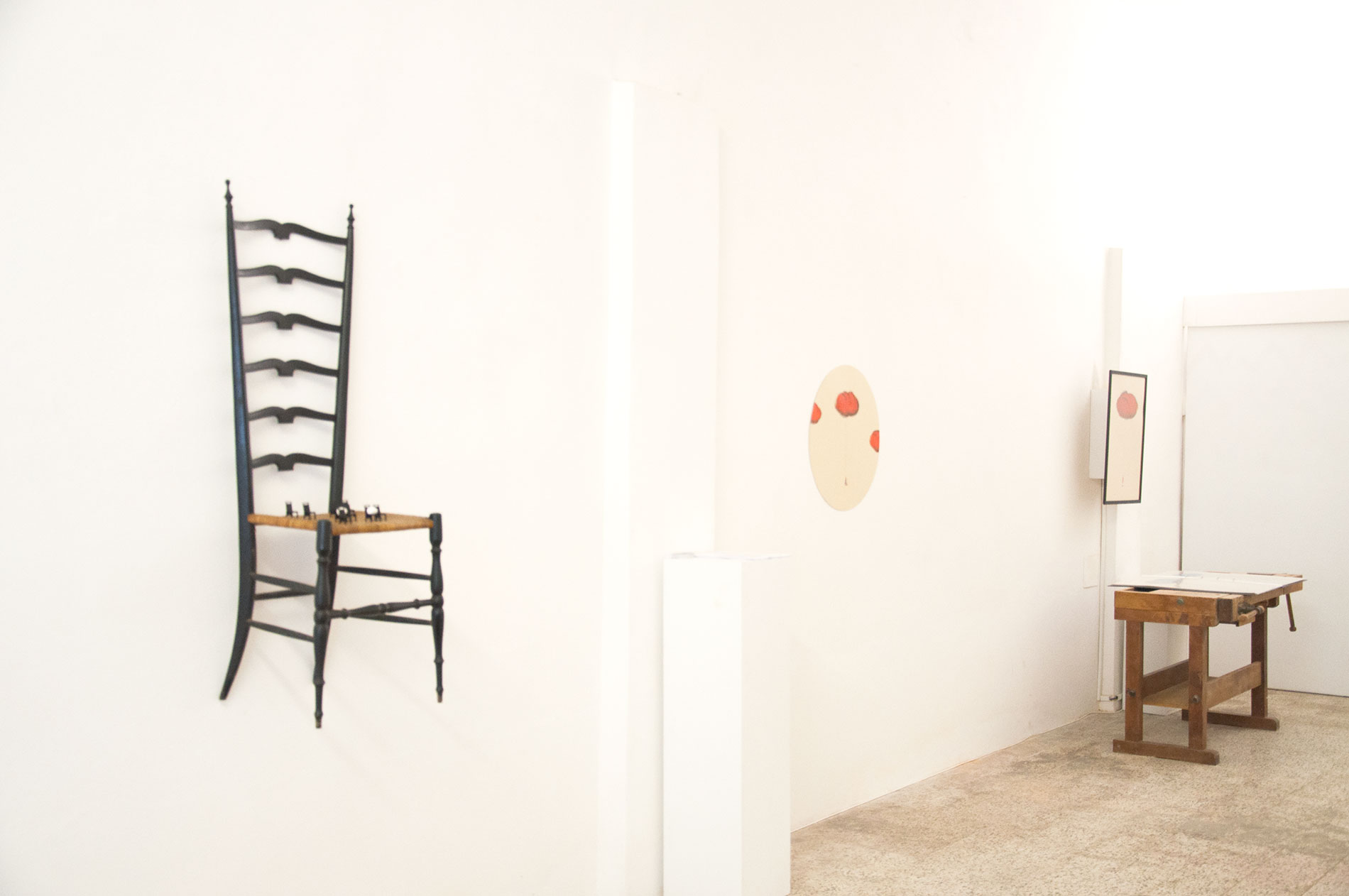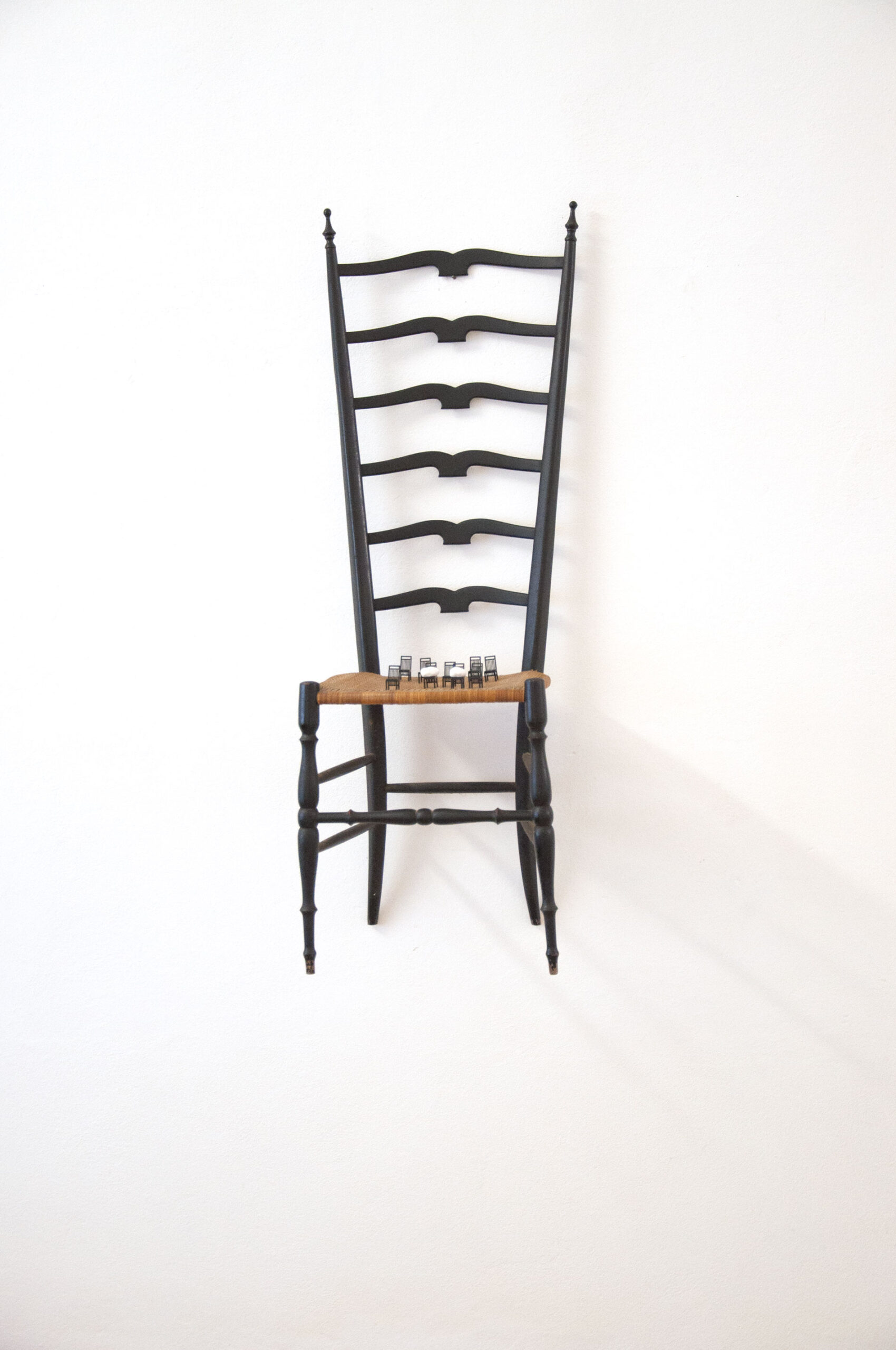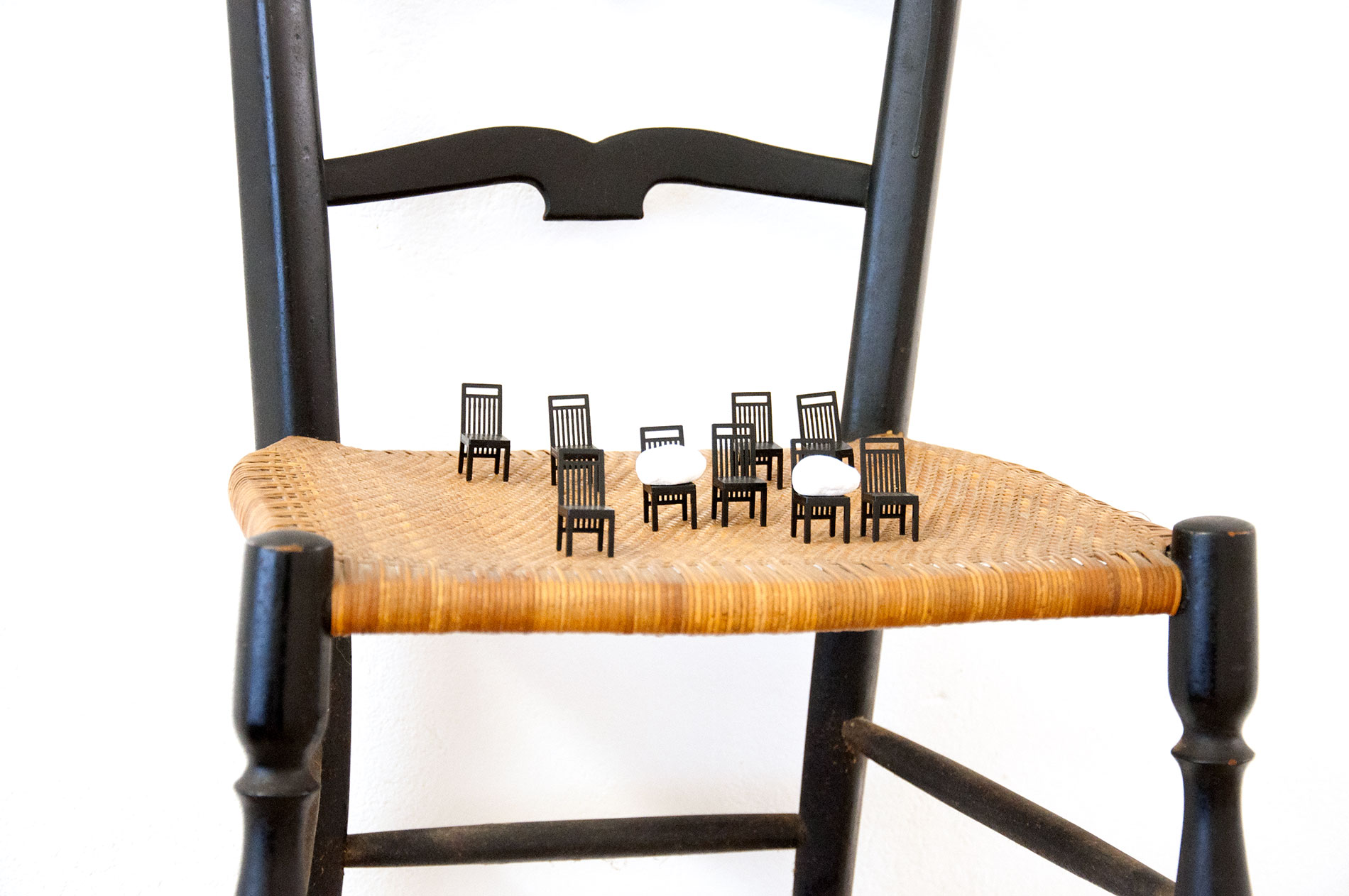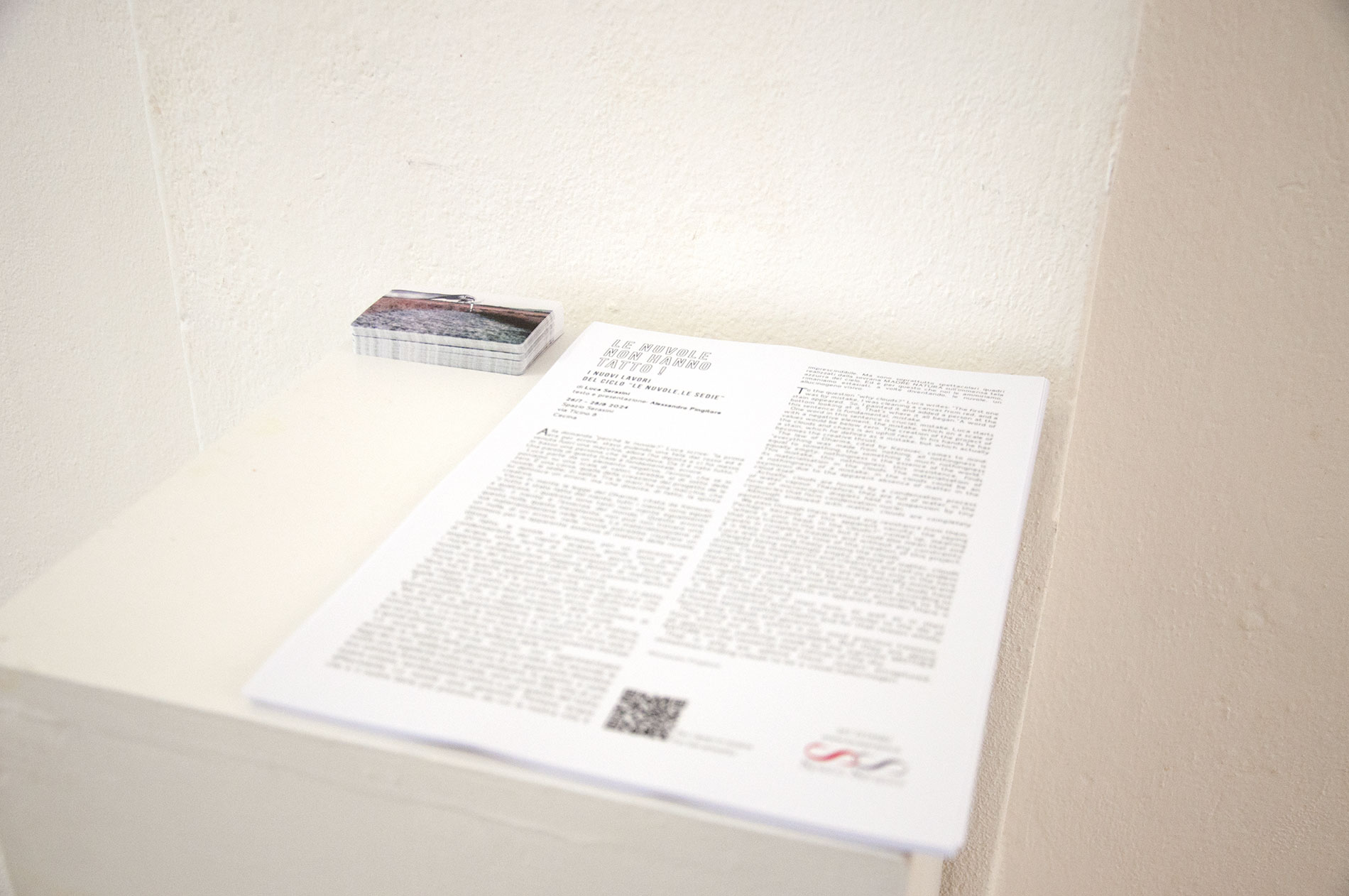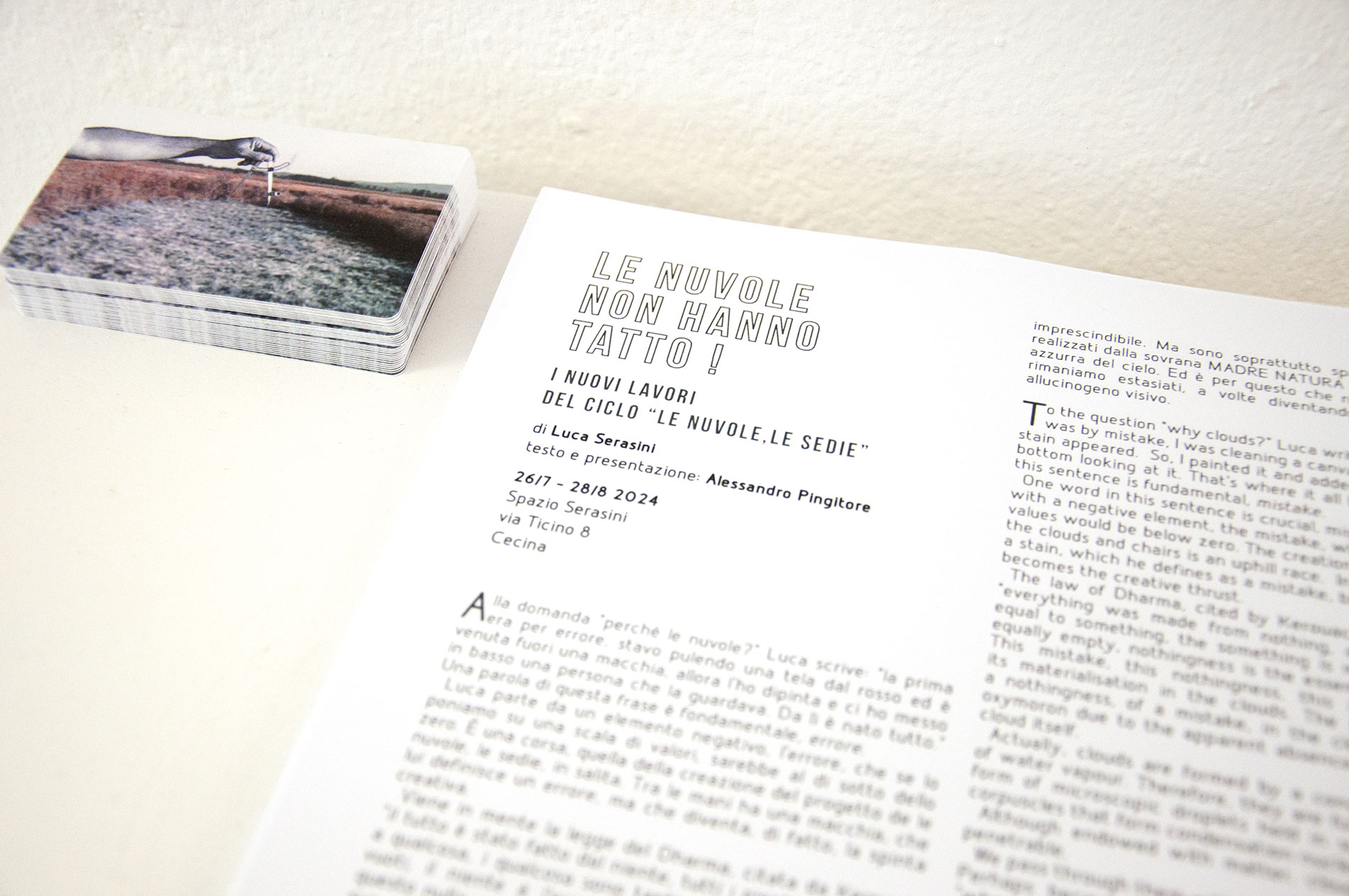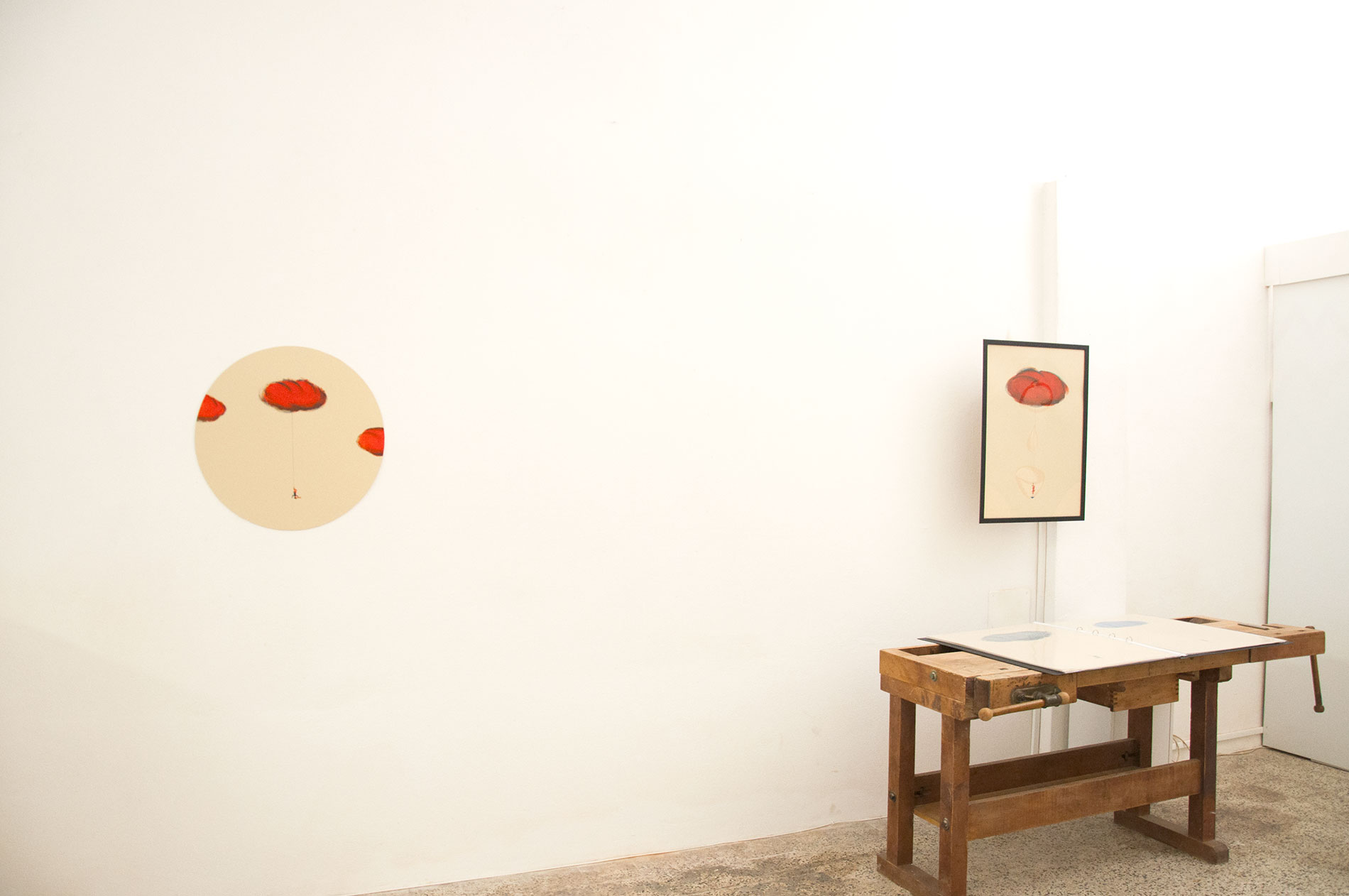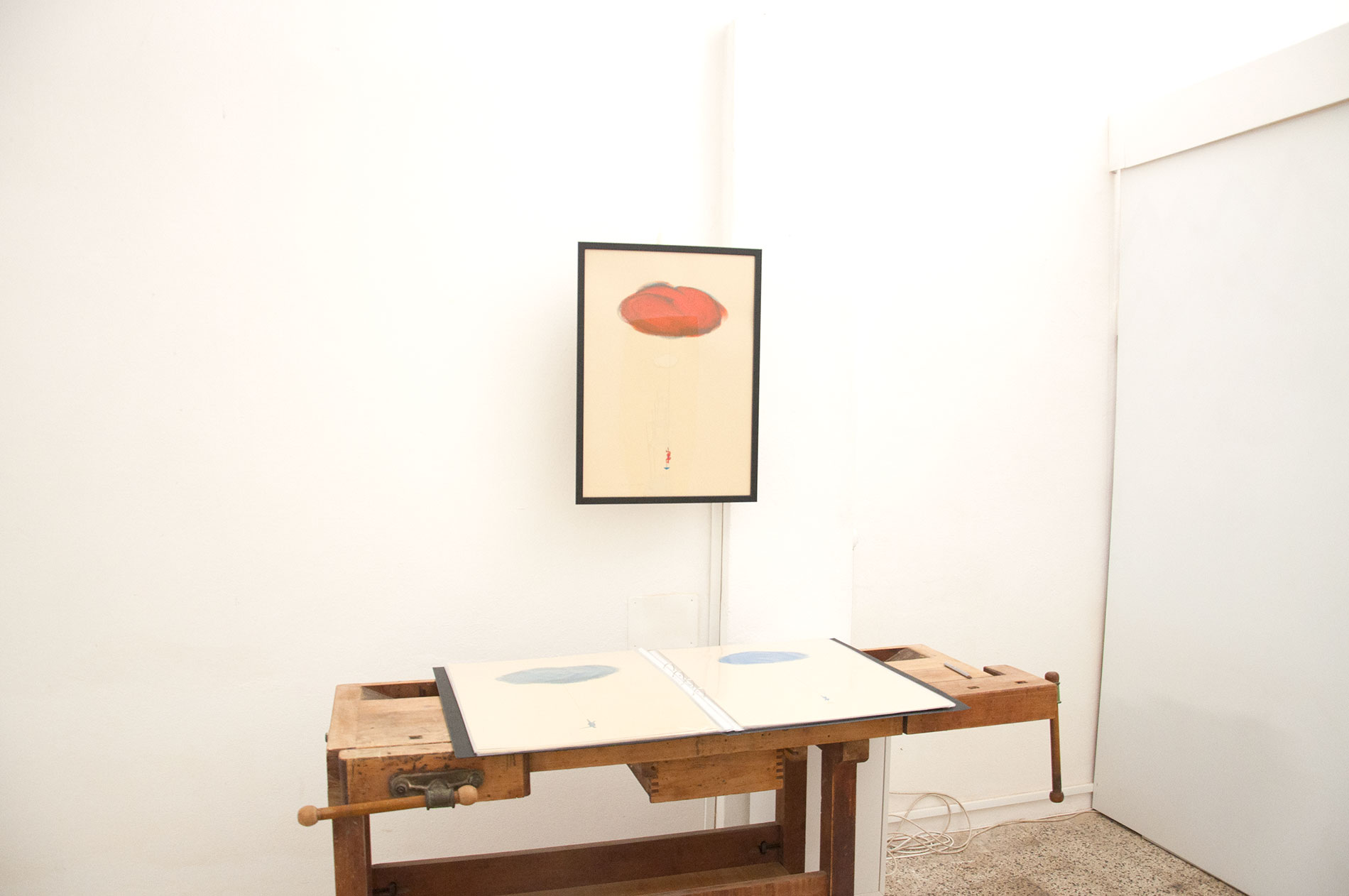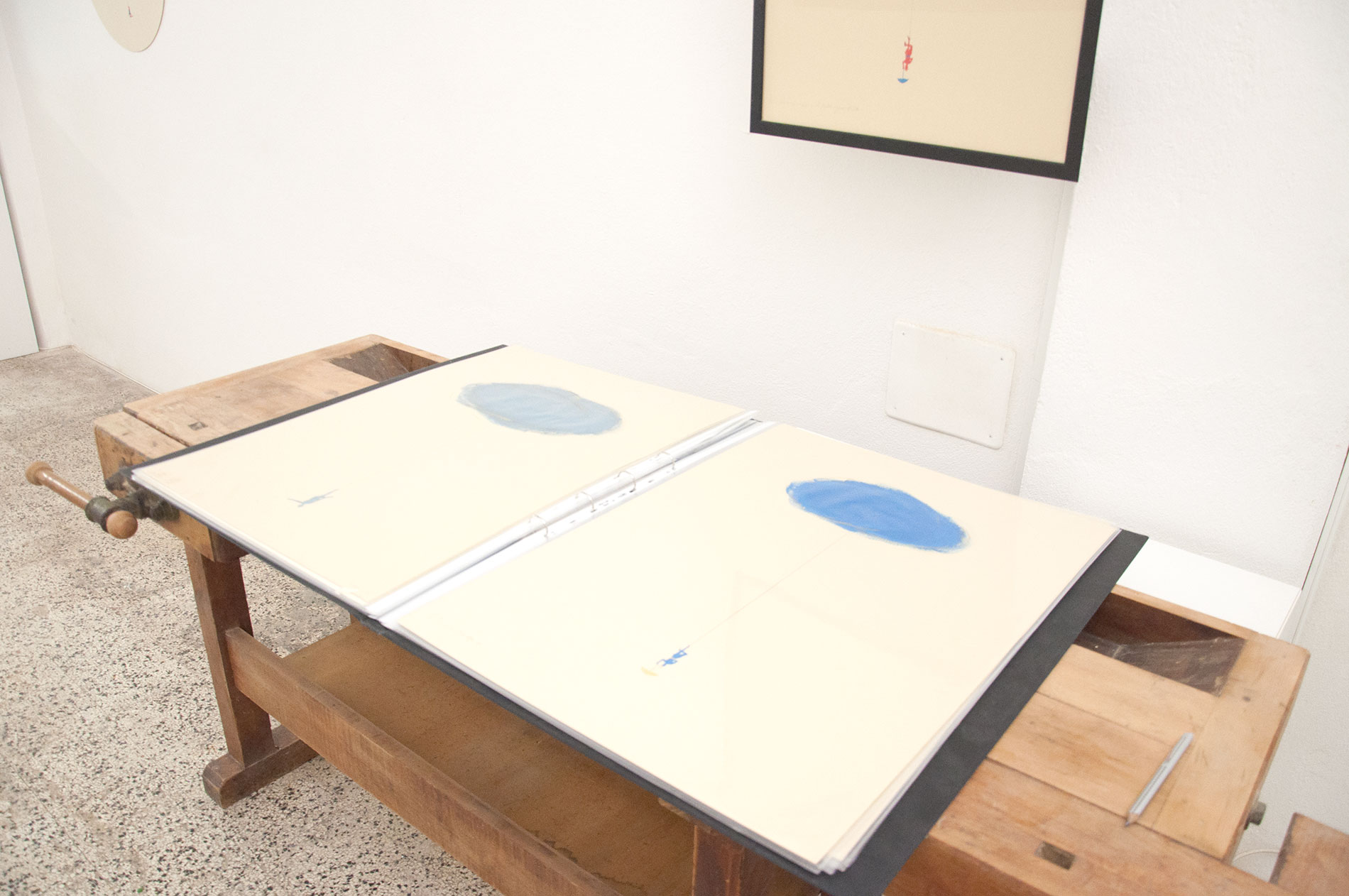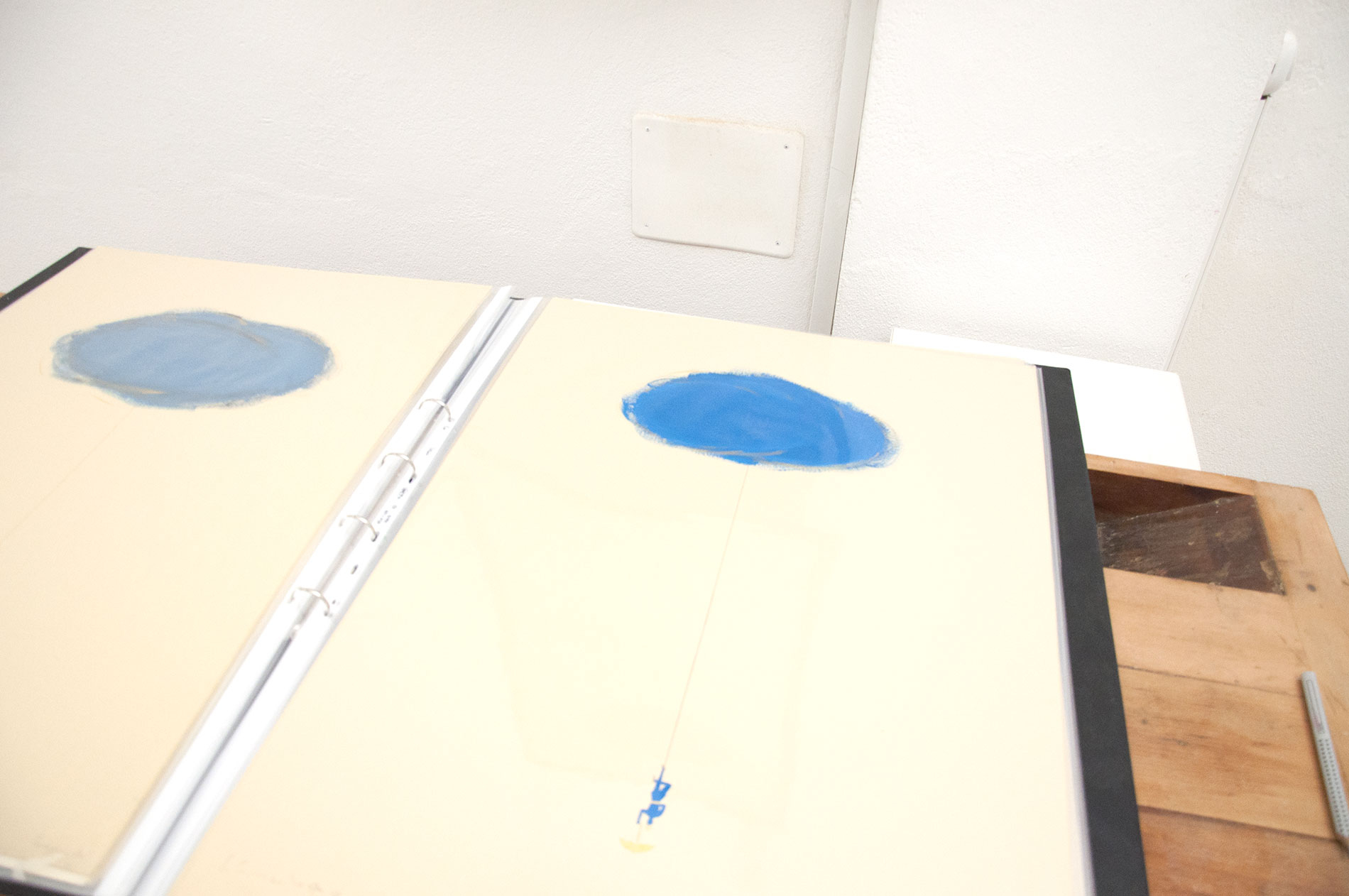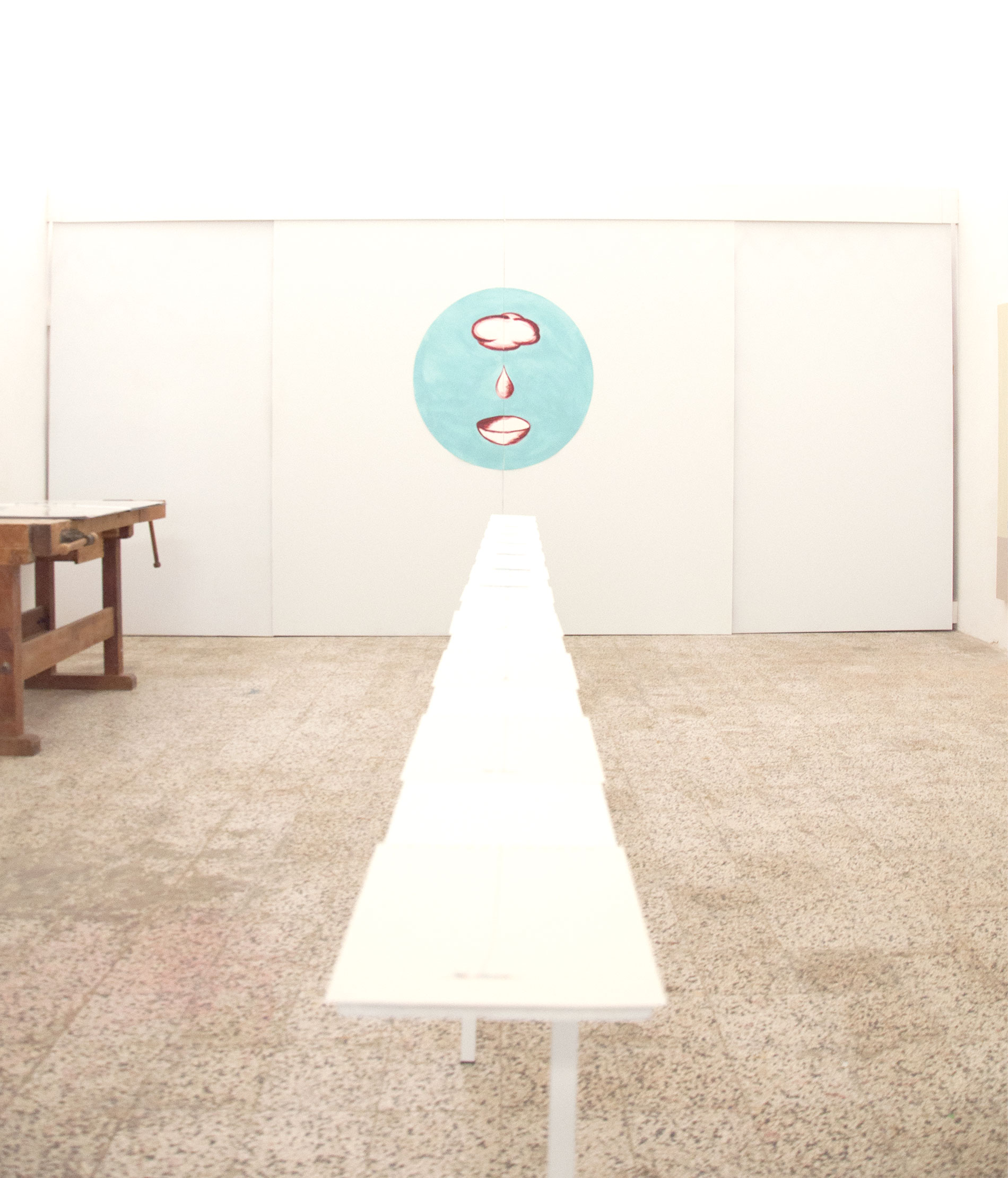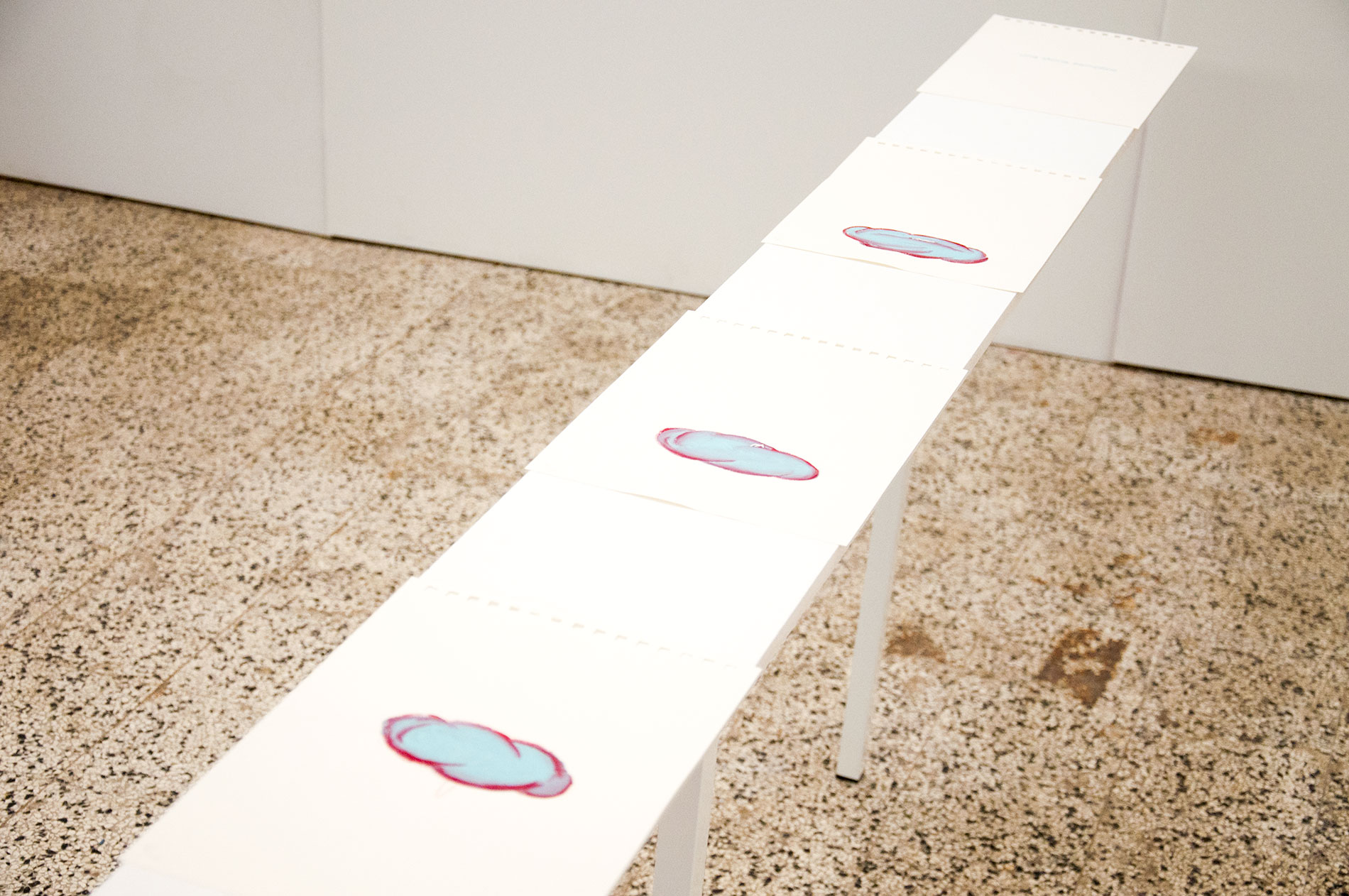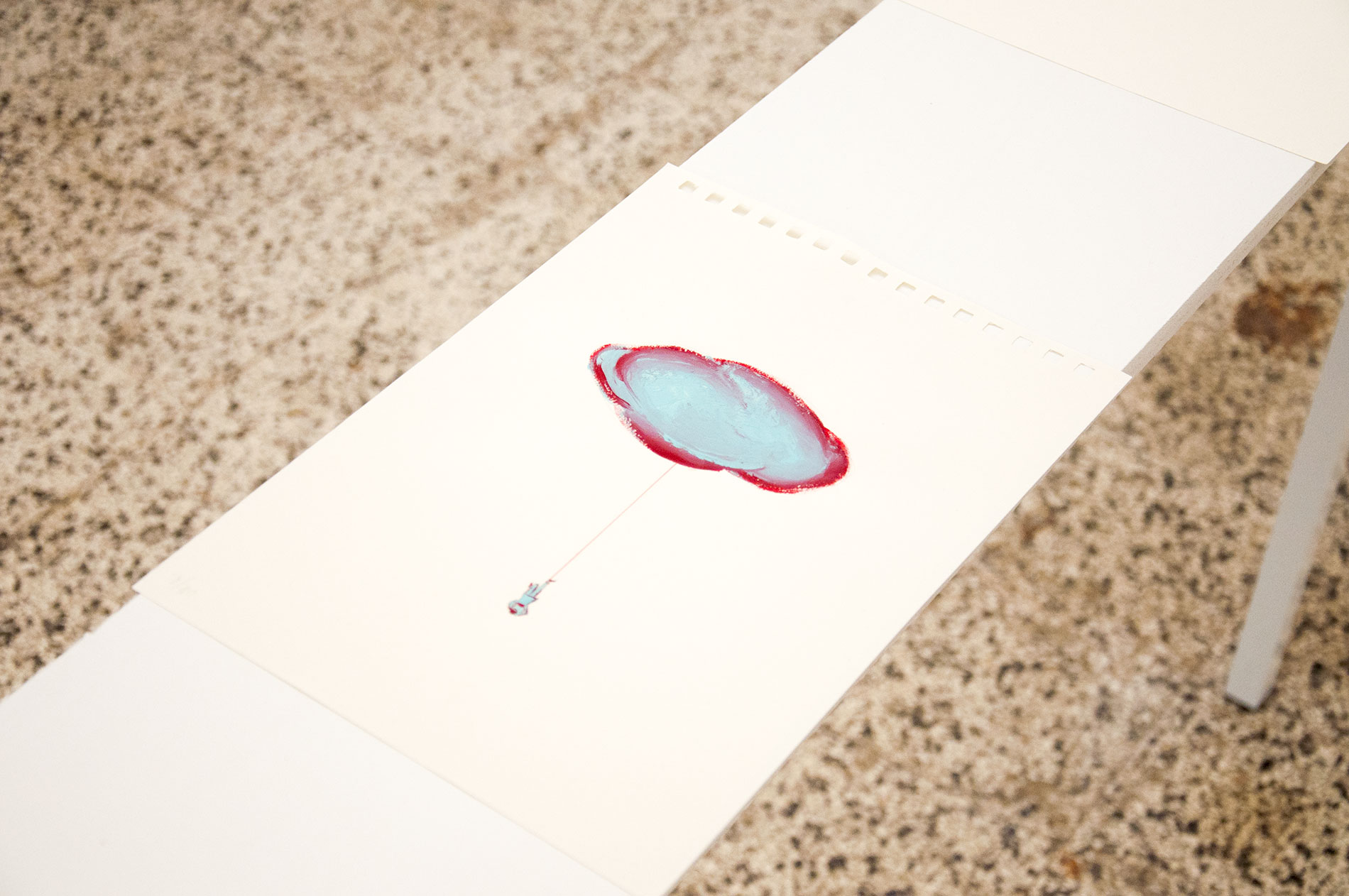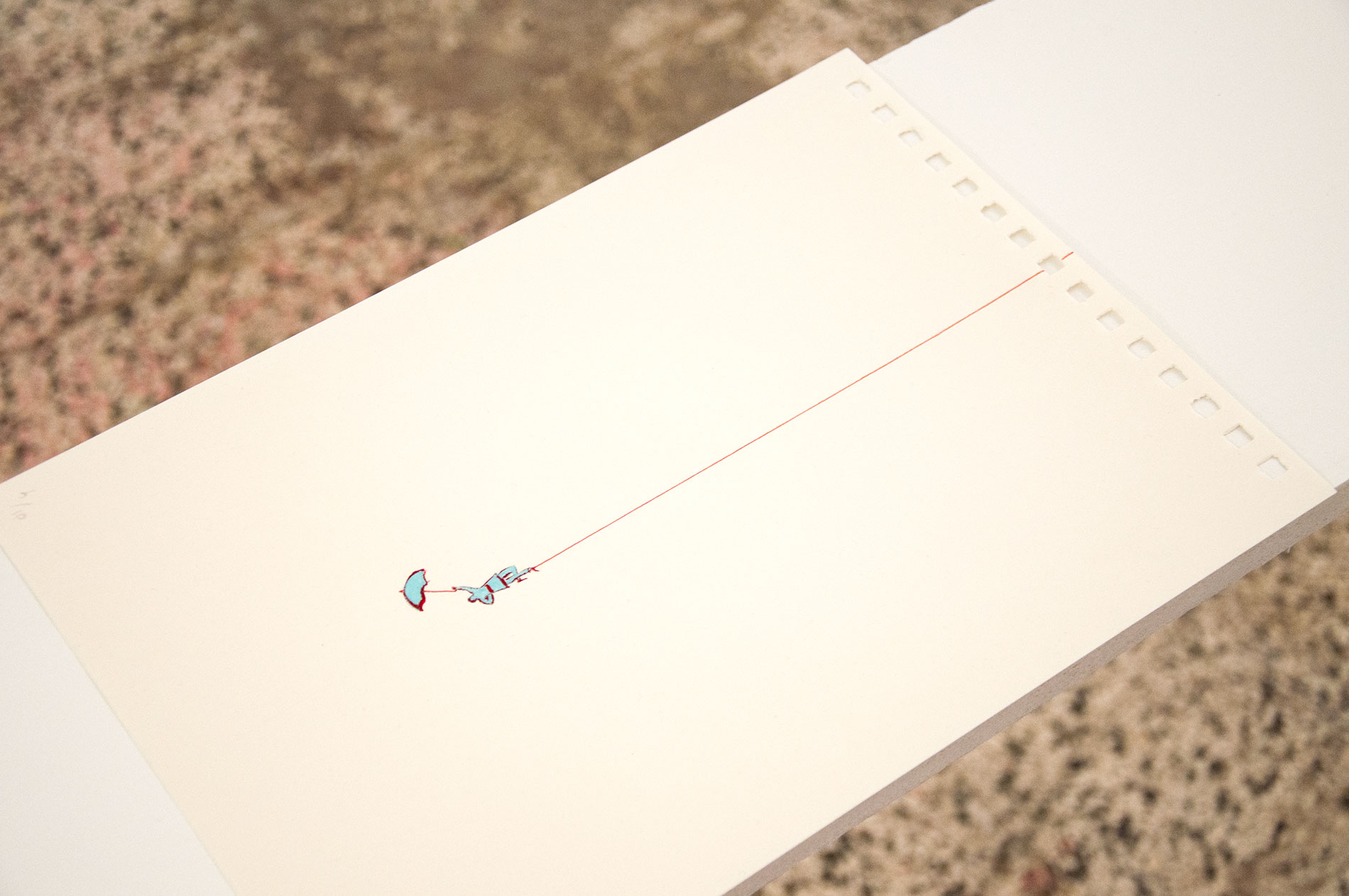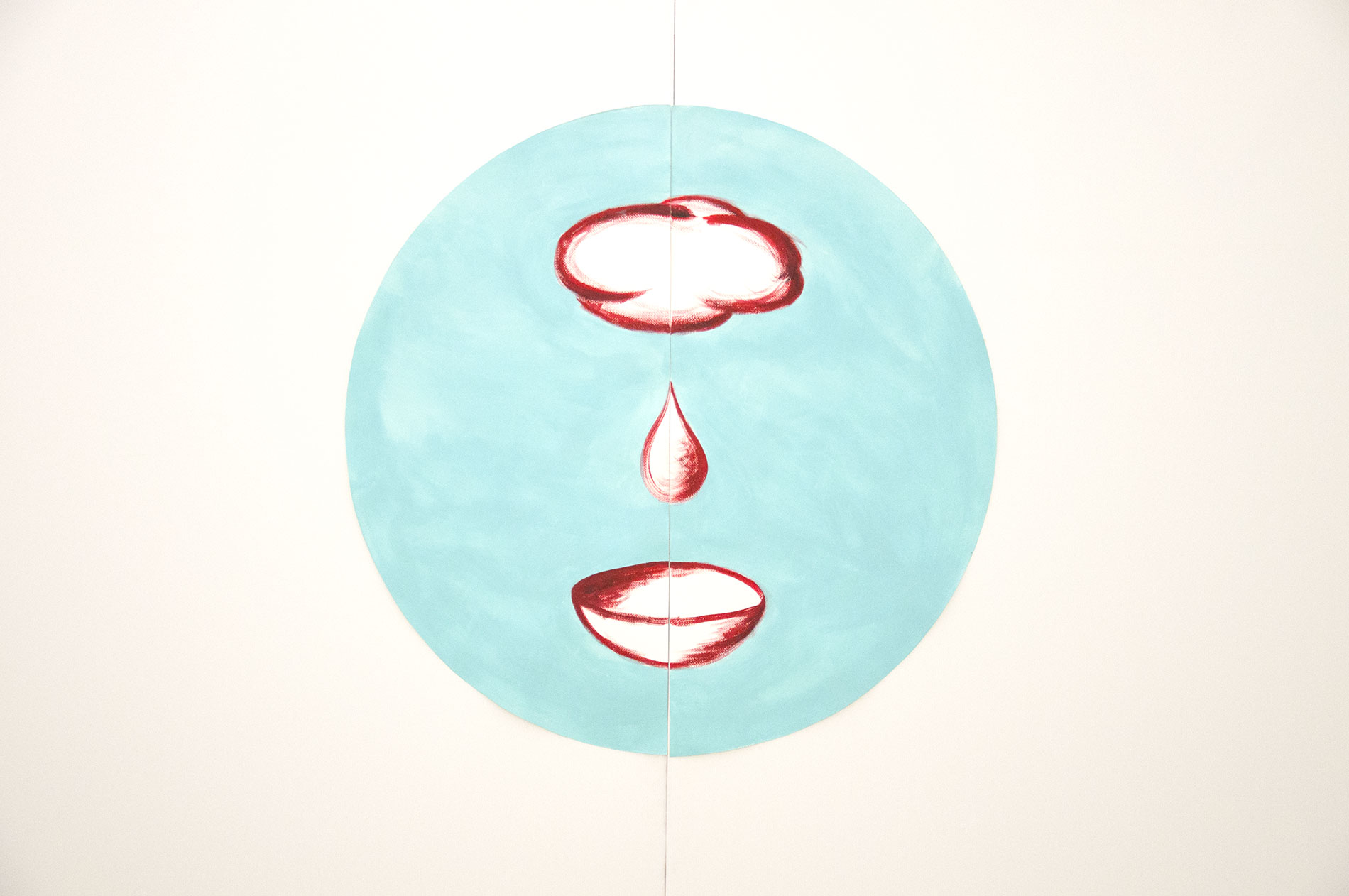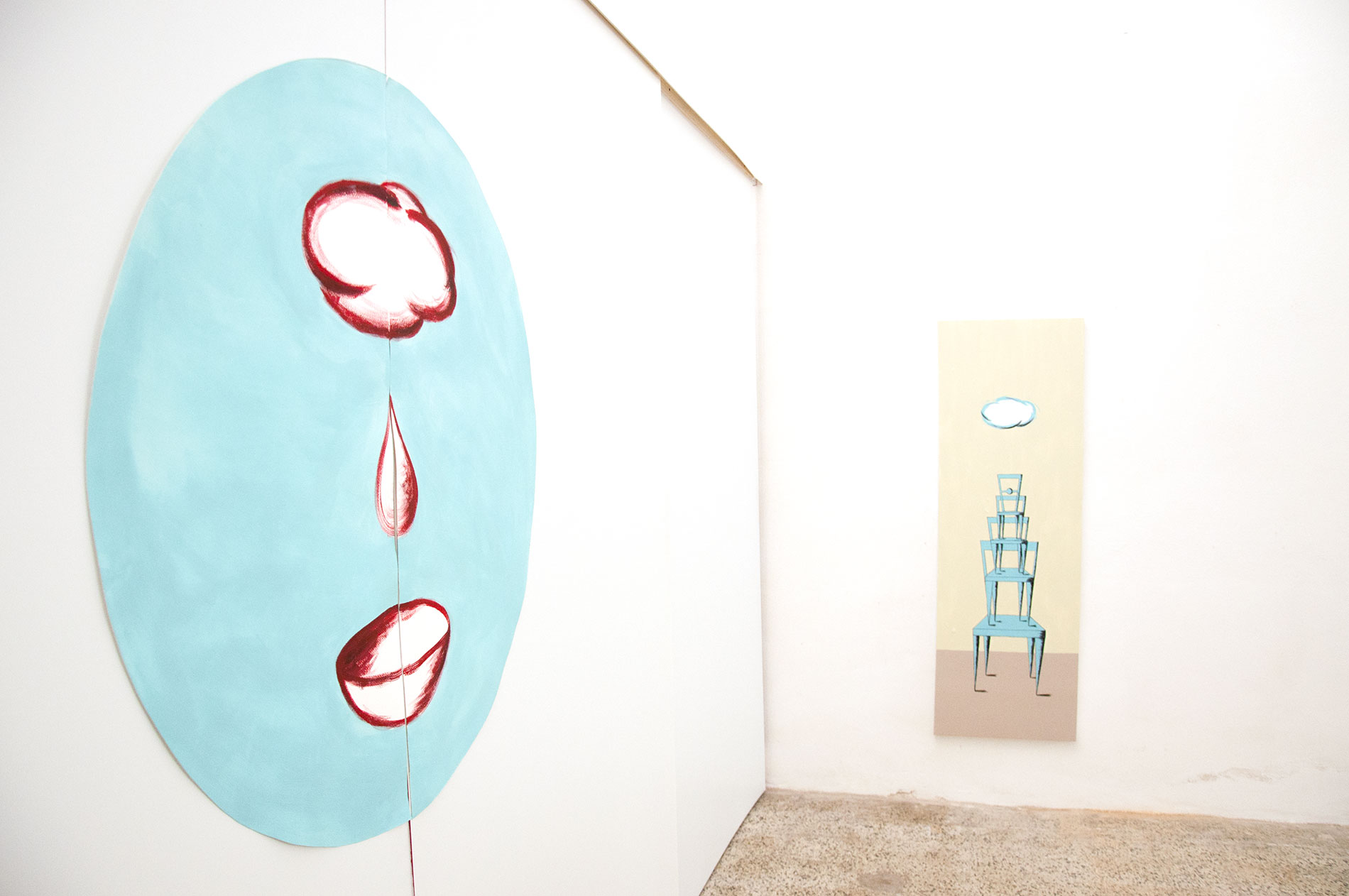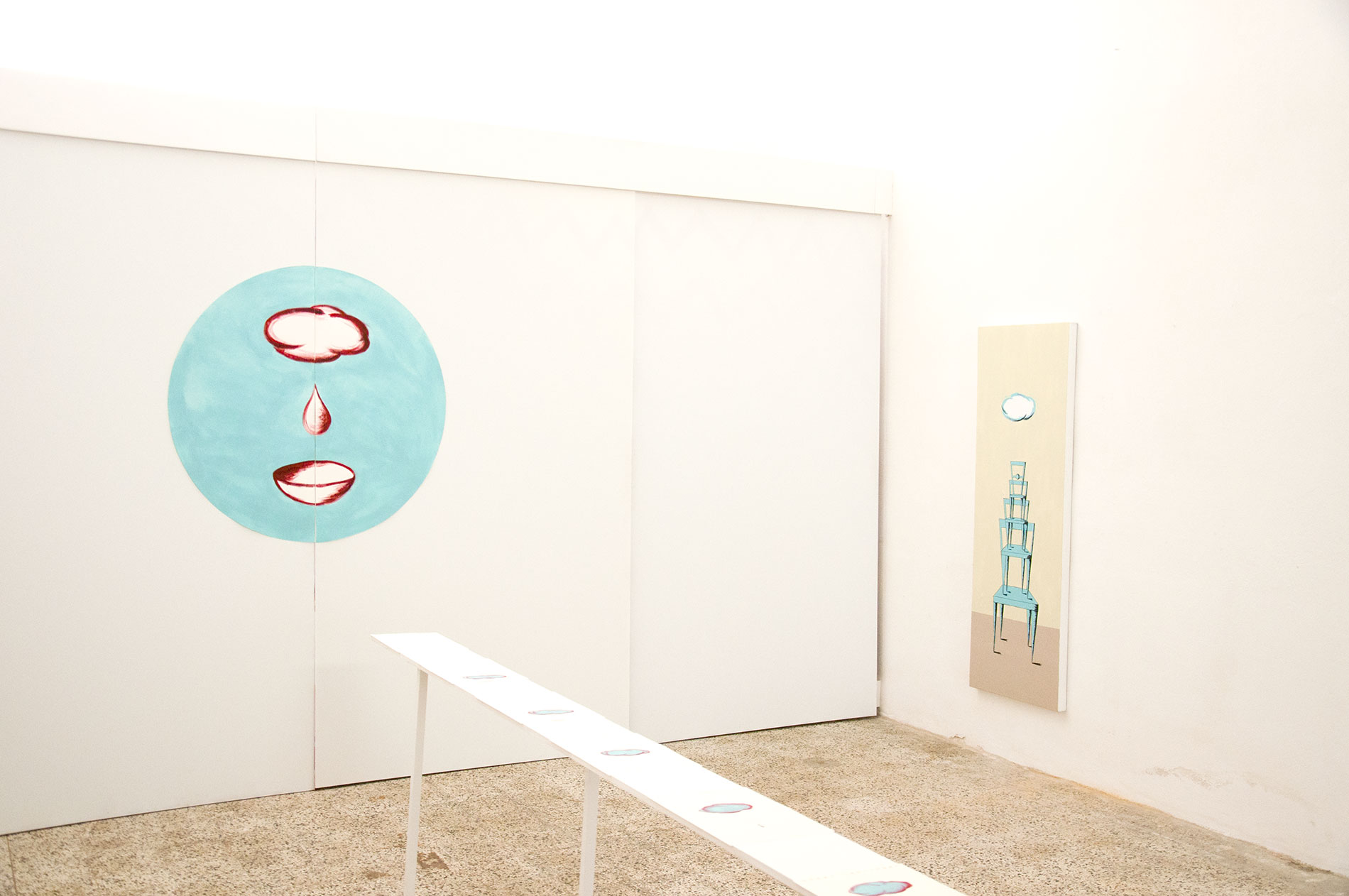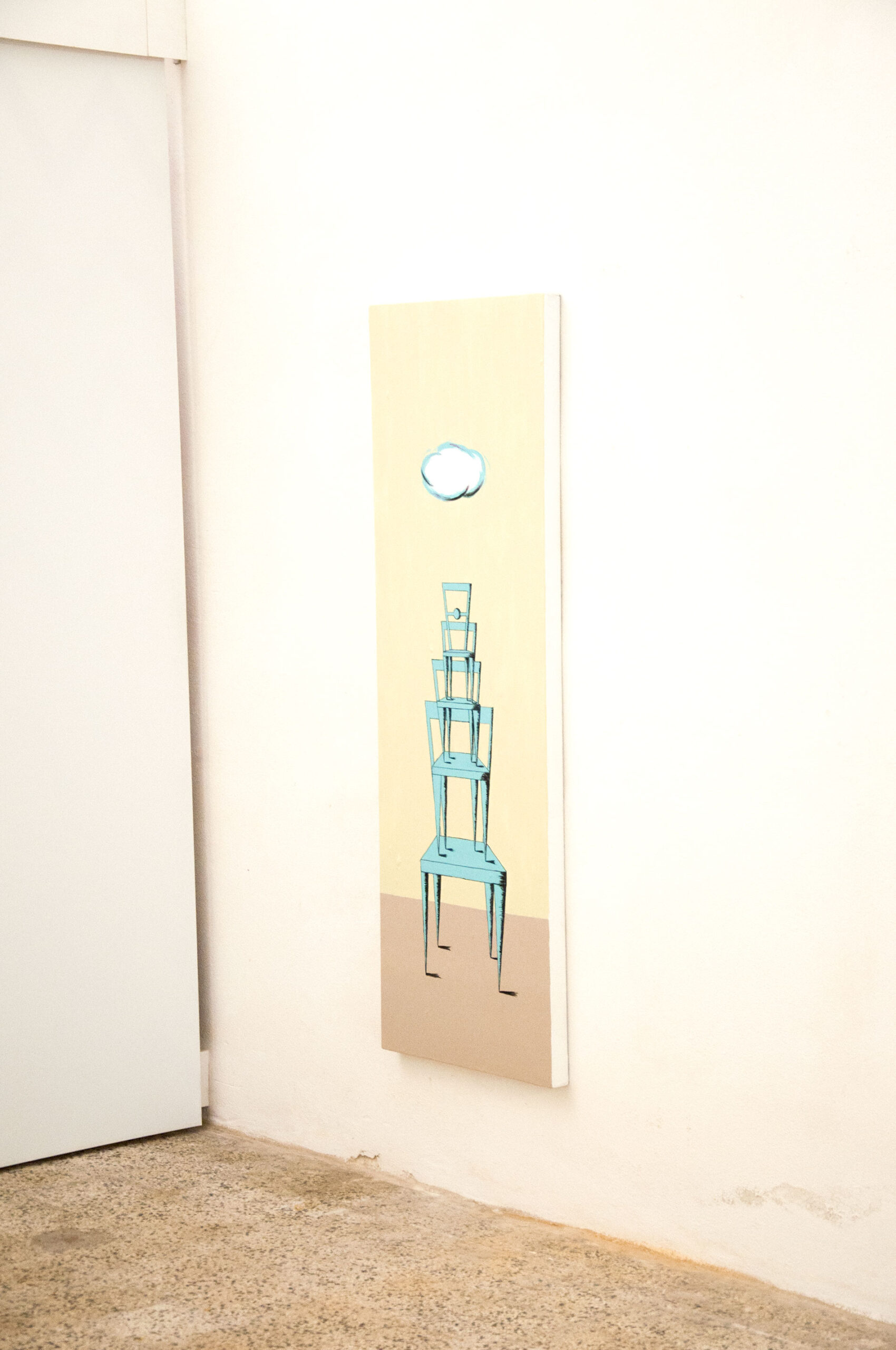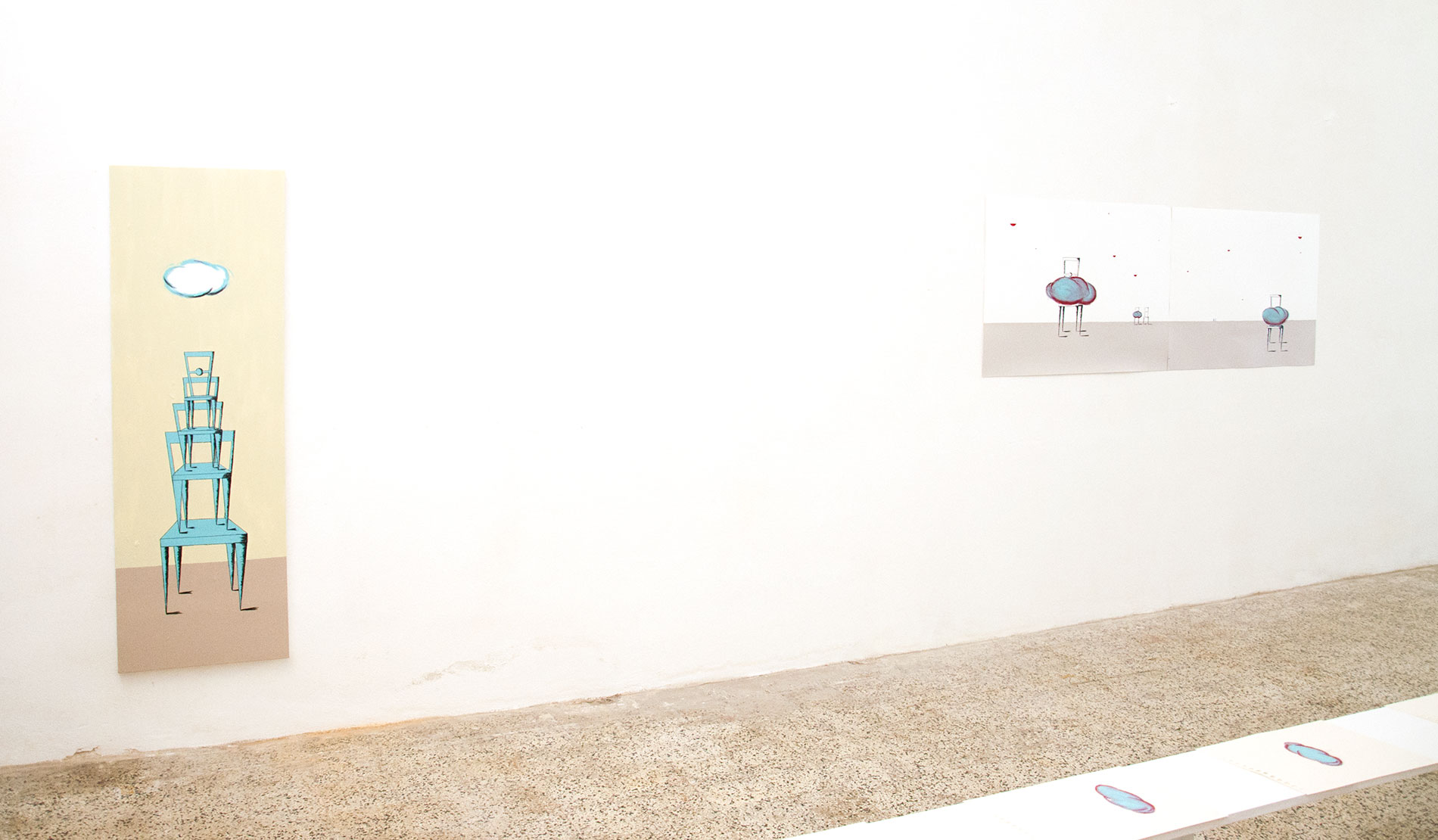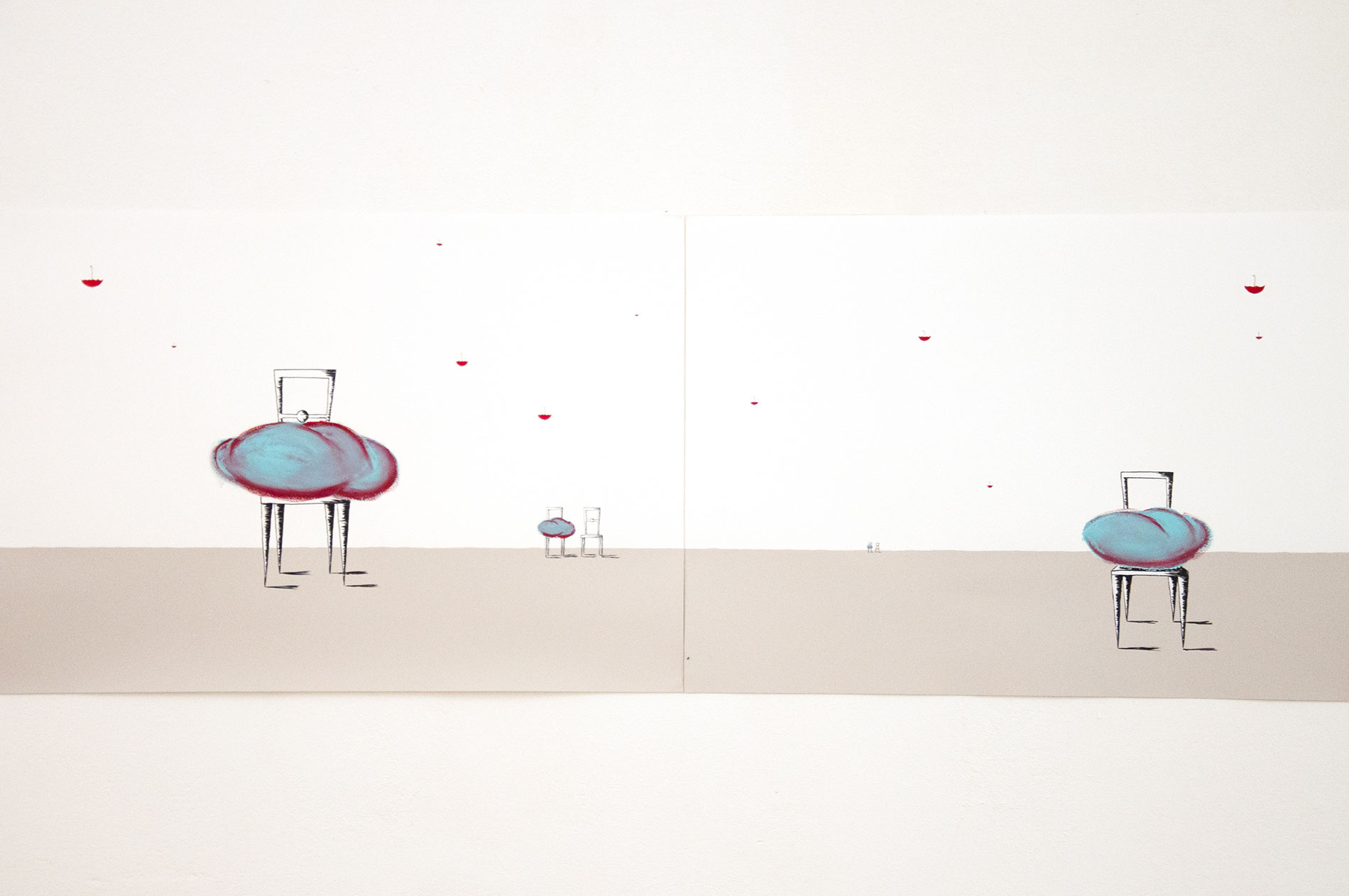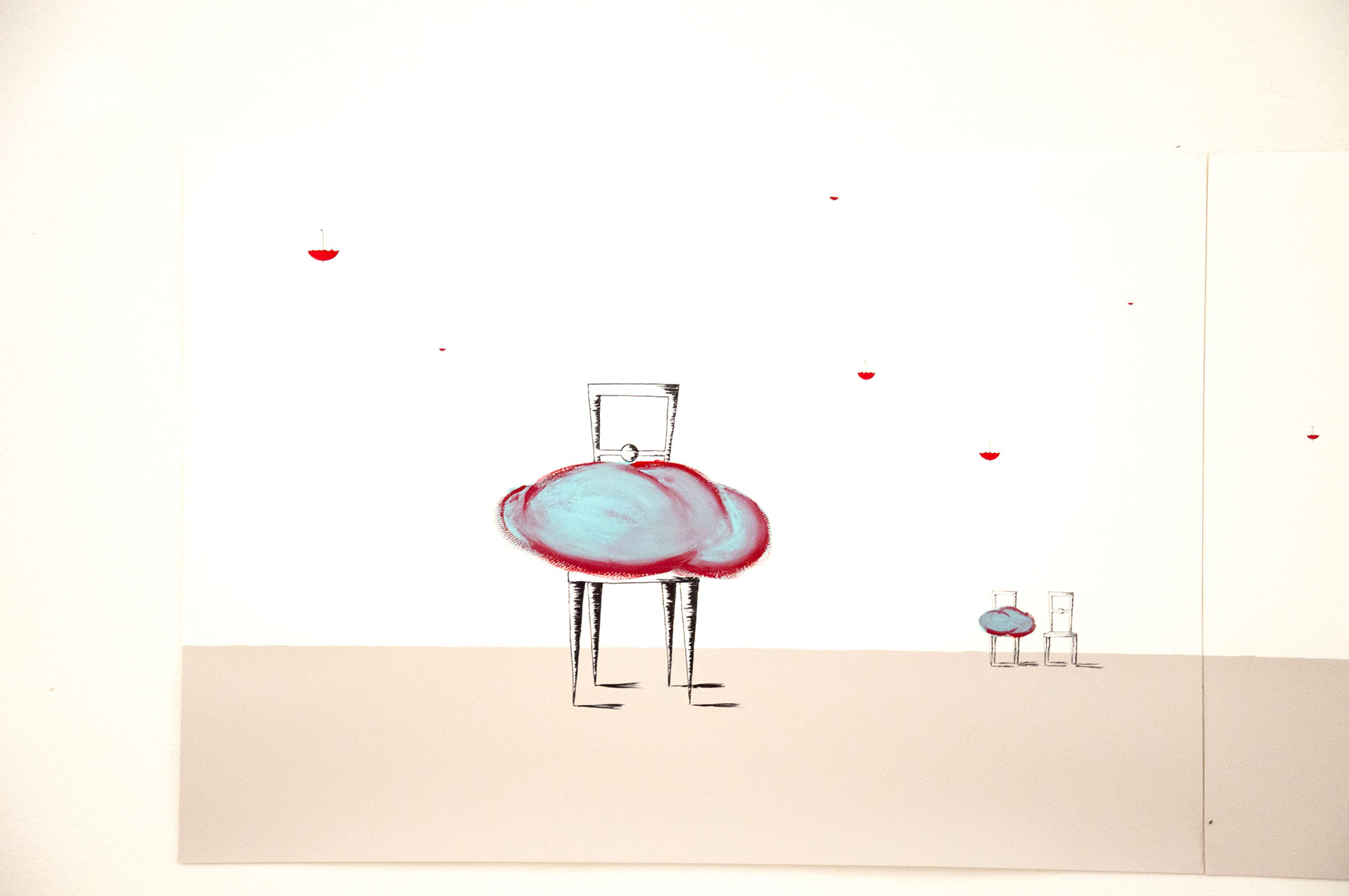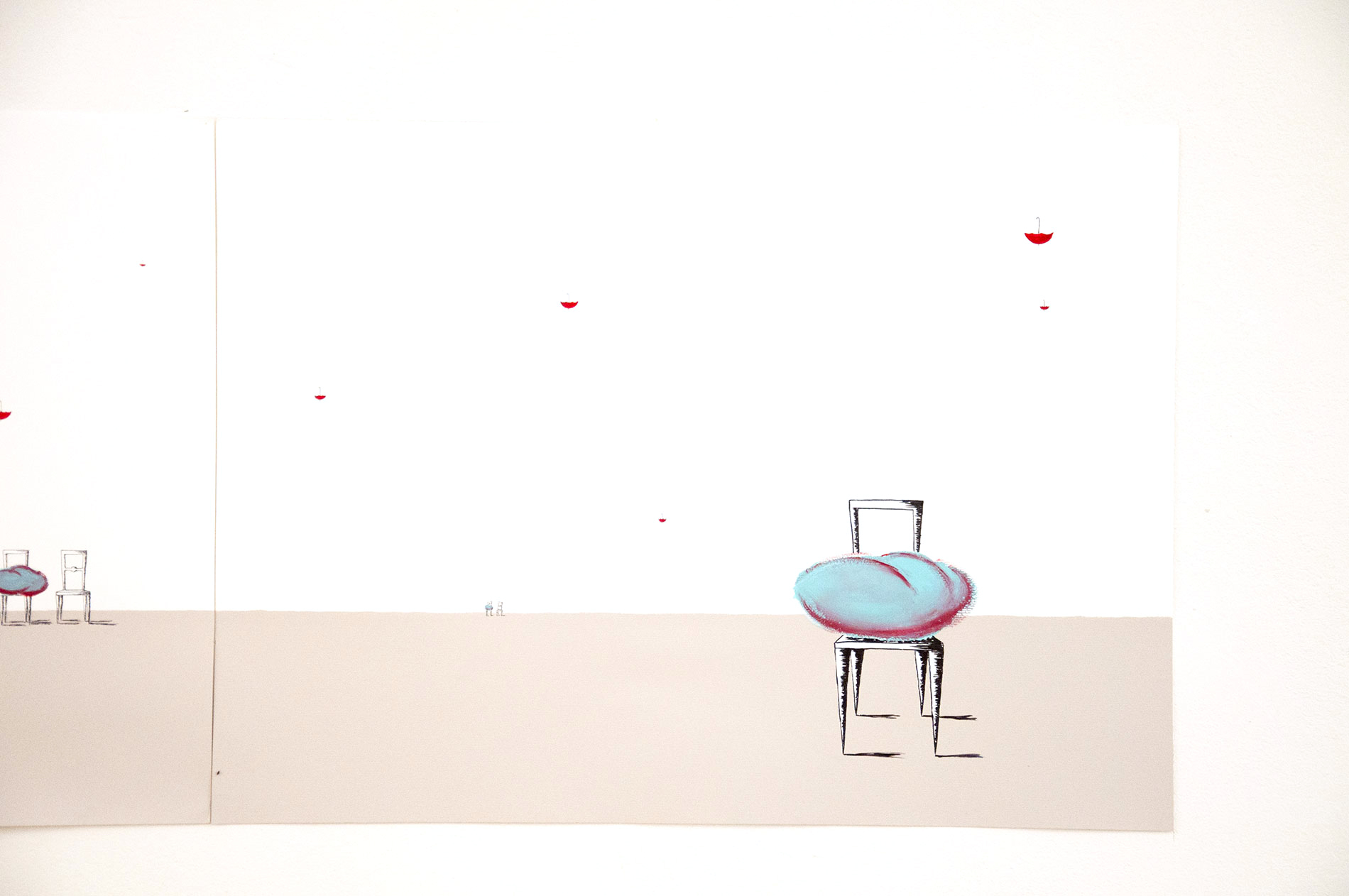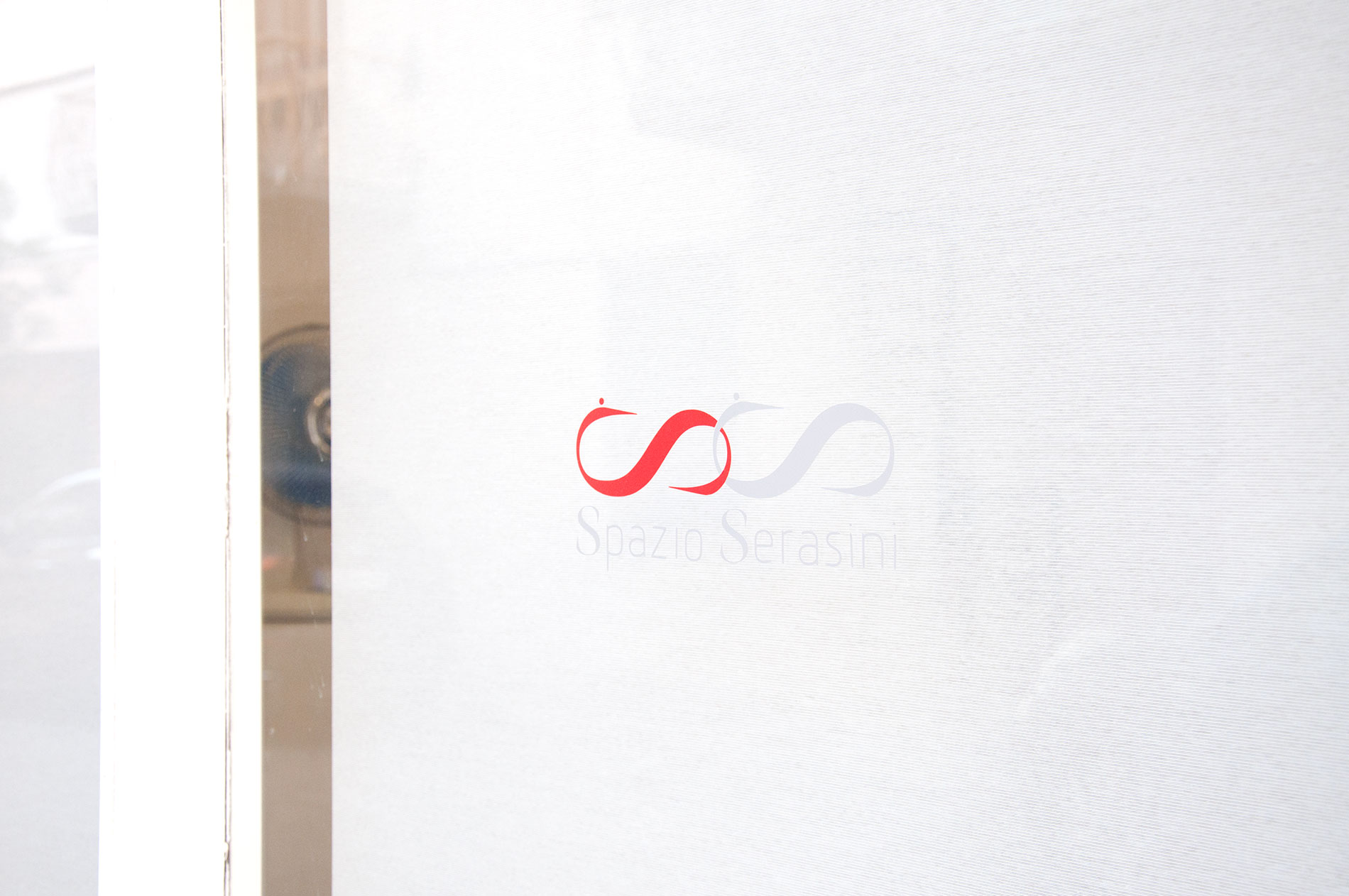
LE NUVOLE NON HANNO TATTO !
i nuovi lavori del ciclo “le nuvole, le sedie”
testo e presentazione di Alessandro Pingitore
Spazio Serasini
26 luglio – 28 agosto 2024 / July 26 – August 28
[IT]
Alla domanda “perché le nuvole?” Luca scrive: “la prima era per errore, stavo pulendo una tela dal rosso ed è venuta fuori una macchia, allora l’ho dipinta e ci ho messo in basso una persona che la guardava. Da lì è nato tutto.” Una parola di questa frase è fondamentale, errore. Luca parte da un elemento negativo, l’errore, che se lo poniamo su una scala di valori, sarebbe al di sotto dello zero. È una corsa, quella della creazione del progetto de le nuvole, le sedie, in salita. Tra le mani ha una macchia, che lui definisce un errore, ma che diventa, di fatto, la spinta creativa.
Viene in mente la legge del Dharma, citata da Kerouac: “il tutto è stato fatto dal niente, tutti i niente sono eguali a qualcosa, i qualcosa sono tanti non niente egualmente vuoti, il niente è l’essenza del mondo.” Questo errore, questo nulla, questo inesistente, non può non trovare una sua materializzazione nelle nuvole. La materializzazione di un nulla, di un errore, nelle nuvole potrebbe risultare un ossimoro per la apparente assenza di materia della nuvola stessa.
Di fatto, le nuvole si formano per un processo di condensazione del vapore acqueo, quindi, sono piene di acqua, sotto forma di minuscole gocce tenute in sospensione grazie a minuscoli corpuscoli che formano i nuclei di condensazione. Seppure dotate di materia, le nuvole sono del tutto penetrabili. Noi ci passiamo dentro senza che loro oppongano alcuna resistenza.
Forse per questa apparente vacuità, viene fuori il detto “dove hai la testa, tra le nuvole?”, volendo significare che uno viaggia nel vuoto, ma potrebbe anche significare che quello viaggia in piena libertà e senza alcun vincolo.
È verosimile che, in quel momento della creazione di questo progetto, Luca viaggiava libero tra le nuvole. Ma anche se apparentemente vacue, prive di materia, le nuvole stimolano la fantasia e la creatività e ci dicono infinite cose. Le nuvole non hanno un domani, vivono solo il qui ed ora, senza un futuro. Sono drammaticamente mortali e quindi effimere, come la bellezza delle rose.
Le nuvole hanno forme infinite, non rappresentabili secondo la rigidità della geometria euclidea ma secondo le leggi del caos, laddove all’interno di un apparente disordine esiste una regolarità tutta da individuare. In questo, e nella loro estrema brevità esistenziale, sono simili alla vita di un essere umano, terribilmente caotica e per questo del tutto affascinante. Le nuvole sono generose. Portano acqua che è il nostro bene più prezioso, da cui la nostra vita è imprescindibile. Ma sono soprattutto spettacolari quadri realizzati dalla sovrana MADRE NATURA sull’immensa tela azzurra del cielo. Ed è per questo che noi le ammiriamo, rimaniamo estasiati, a volte diventando, le nuvole, un allucinogeno visivo.
testo di Alessandro Pingitore
[EN]
To the question “why clouds?” Luca writes: “The first one was by mistake, I was cleaning a canvas from red, and a stain appeared. So, I painted it and added a person at the bottom looking at it. That’s where it all began.”A word of this sentence is fundamental, mistake. One word in this sentence is crucial, mistake. Luca starts with a negative element, the mistake, which on a scale of values would be below zero. The creation of the project of the clouds and chairs is an uphill race. In his hands he has a stain, which he defines as a mistake, but which actually becomes the creative thrust.
The law of Dharma, cited by Kerouac, comes to mind: “everything was made from nothing, all nothingness is equal to something, the something is much nothingness equally empty, nothingness is the essence of the world.” This mistake, this nothingness, this inexistence, finds its materialisation in the clouds. The materialisation of a nothingness, of a mistake, in the clouds could be an oxymoron due to the apparent absence of matter in the cloud itself. Actually, clouds are formed by a condensation process of water vapour. Therefore, they are full of water, in the form of microscopic droplets held in suspension by tiny corpuscles that form condensation nuclei.
Although endowed with matter, clouds are completely penetrable. We pass through them without any resistance from them. Perhaps because of this apparent vacuity, the saying “where is your head, in the clouds?” comes up, meaning that one travels in the void, but it could also mean that one travels in complete freedom and without any constraints. It is likely that, at the time of the creation of this project, Luca was travelling freely among the clouds.
Despite being seemingly empty, devoid of matter, clouds stimulate the imagination and creativity and tell us endless things. Clouds have no tomorrow, they live only in the here and now, without a future. They are dramatically mortal and therefore transient, like the beauty of roses. Clouds have infinite shapes, which cannot be represented according to the rigidity of Euclidean geometry but according to the laws of chaos, where within an apparent disorder there is a regularity to be found. In the complexity of their form, as well as in their extreme existential brevity, they are similar to the life of a human being, awfully chaotic and for that reason wholly fascinating. Clouds are generous. They bring water, which is our most precious treasure, from which our life is unavoidable. But they are above all spectacular paintings made by the supreme MOTHER NATURE on the immense blue canvas of the sky. That is why we admire them, remain enraptured, sometimes finding clouds to be a visual hallucinogen.
text by Alessandro Pingitore
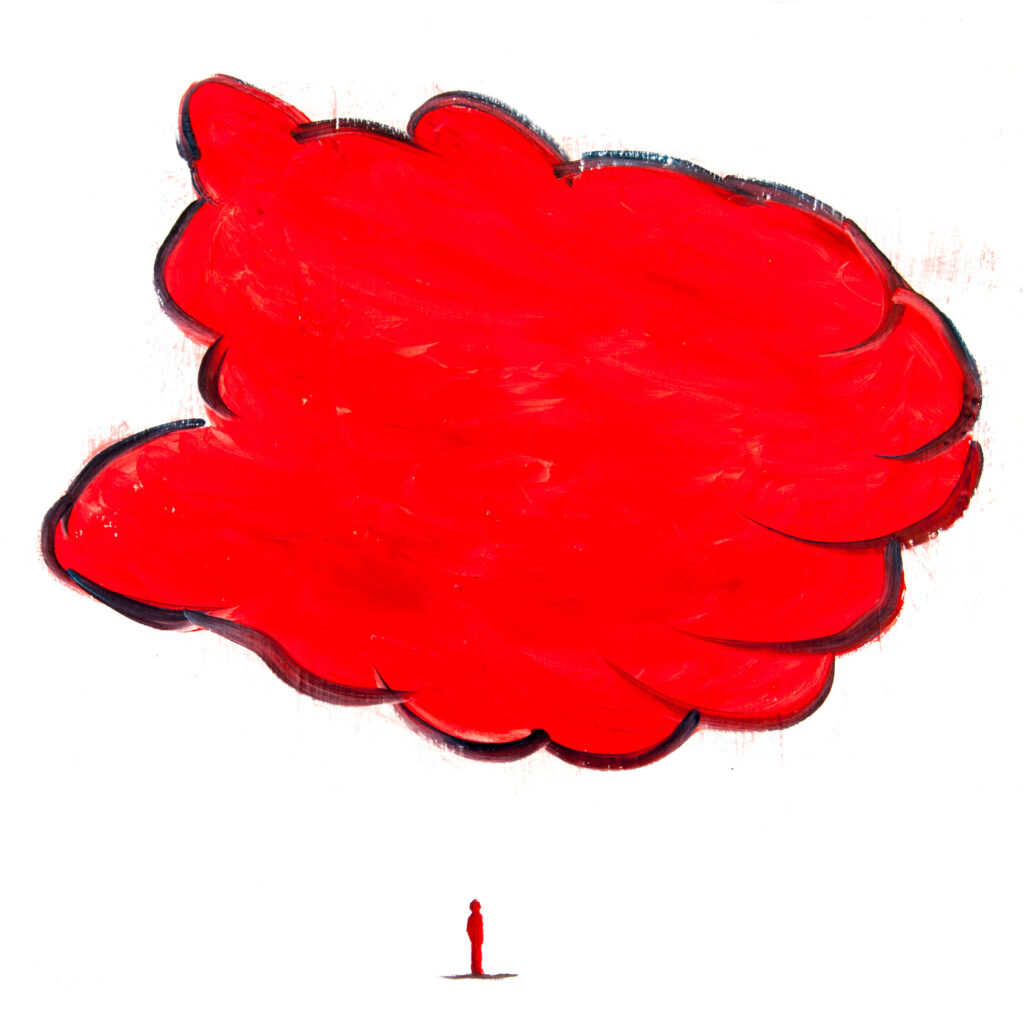
oil on stucco on canvas
40 x 40 cm
2020
